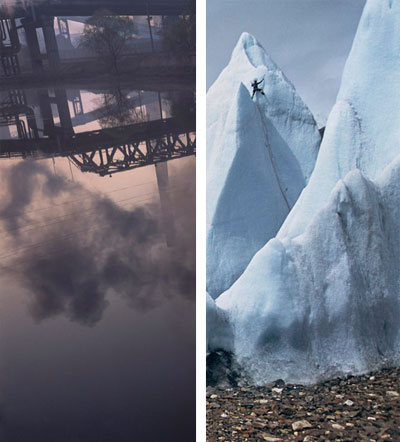
Niu Guozheng, Pingdingshan, China (left) Jimmy Chin, Rongbuk Glacier, Tibet (right)
Some say the world will end in fire, some say in ice. That morbid line belongs to an American poet with a last name in keeping with the latter category. And while Robert Frost wasn’t thinking about climate change when he wrote those words, the evidence provided by scientists — not to mention the disaster-filled evening news telecasts of recent weeks — suggests that he might have been on to something. We won’t get ahead of ourselves with thoughts of the end of the world, but as the planet continues to warm, it would appear that fire’s supremacy over ice is gaining momentum in much of the country.
It was in the same overarching context that a prominent exhibit in documentary photography opened in Beijing last year, titled “COAL+ICE.” Organized by the Asia Society’s Center on U.S.-China Relations, the installation was split between depictions of China’s coal mining industry and the melting glaciers in the country’s Tibetan Plateau with the clear implication that the two subjects share a crucial link. Now that a condensed version is being shown at the Resnick Gallery in Aspen, CO through the end of the month, it’s worth taking a look at this ambitious collection of works and at the calculus under which coal fire plus Himalayan ice equals something none of us want to see.




 Facebook
Facebook Permalink
Permalink Digg
Digg Reddit
Reddit LinkedIn
LinkedIn StumbleUpon
StumbleUpon Tumblr
Tumblr

